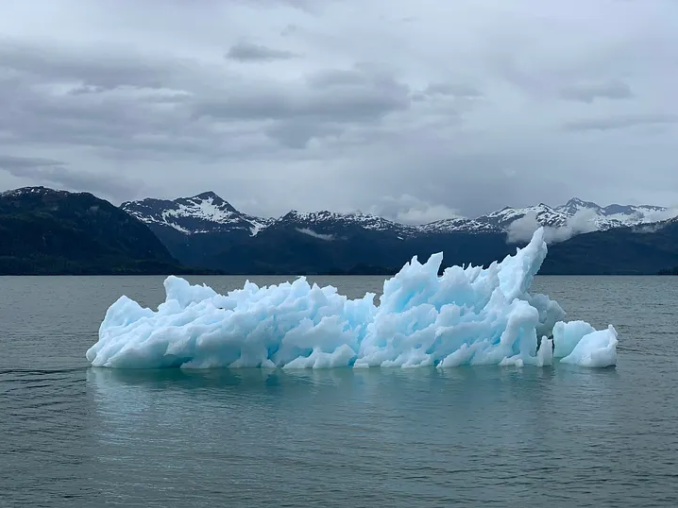
The Economics of Climate Change
Share
By Tyler P.
How Rising Temperatures Impact Agriculture, Insurance, Migration, and National Economies
When people think of climate change, they often picture melting ice caps or endangered polar bears. While these are real concerns, the economic impacts of rising temperatures are equally urgent. Climate change is no longer a distant environmental issue. It is a present day economic challenge reshaping industries, communities, and even entire nations. From farms to financial markets, the costs are mounting.
Agriculture: The First to Feel the Heat
Agriculture is among the most climate sensitive sectors of the economy. Rising temperatures affect crop yields, water availability, and the spread of pests and diseases. Longer droughts and more frequent heat waves can devastate harvests, while unpredictable rainfall can cause flooding that destroys fields.
For example, a single severe drought in the U.S. Midwest can cause billions of dollars in losses, affecting everything from corn and soybean prices to the cost of meat and dairy. Globally, changes in temperature and precipitation patterns threaten staple crops like rice and wheat, raising food prices and increasing the risk of food insecurity. In developing countries, where agriculture employs a large portion of the population, these impacts can slow economic growth and trap communities in cycles of poverty.
Insurance: A Risky Business
The insurance industry is built on assessing risk, and climate change is making that job harder. More frequent hurricanes, floods, and wildfires increase the number and size of insurance payouts. As these extreme weather events become more common, insurers must raise premiums to cover potential losses or, in some cases, stop offering coverage altogether in high risk areas.
In places like California, some major insurers have already pulled out of the homeowners’ market due to the growing risk of wildfire. This leaves homeowners with fewer choices and higher costs, or without insurance entirely. Without affordable insurance, property values can fall, reducing tax revenues and straining local economies. These ripple effects show how climate change can destabilize financial systems in ways that go beyond direct physical damage.
Migration: Moving to Survive
Climate change is also a driver of migration. As certain regions become less livable due to rising sea levels, extreme heat, or resource scarcity, people are forced to relocate. This phenomenon, sometimes called “climate migration,” is already visible in low lying Pacific islands, coastal parts of Bangladesh, and drought stricken areas in sub Saharan Africa.
Migration has both costs and benefits. For the communities left behind, population loss can weaken the labor force and tax base. For the receiving areas, sudden influxes of people can strain housing, infrastructure, and social services. On the other hand, migration can also provide economic opportunities if new populations bring skills, labor, and entrepreneurship. How governments manage these shifts will be a major factor in whether climate migration becomes a source of instability or resilience.
National Economies: A Global Balancing Act
At the national level, climate change influences economic performance through productivity, infrastructure costs, and trade. Extreme weather events can disrupt supply chains, damage transportation networks, and reduce worker productivity, especially in heat sensitive industries like construction or manufacturing.
Nations that depend heavily on climate sensitive industries, such as agriculture or tourism, are particularly vulnerable. For instance, Caribbean economies that rely on beach tourism face threats from stronger hurricanes and rising sea levels that erode shorelines. On the other hand, countries in colder regions might experience some short term benefits, such as longer growing seasons or reduced heating costs. However, these gains are often outweighed by global disruptions in trade, migration, and resource availability.
The Economic Case for Action
Economists increasingly agree that the cost of inaction on climate change is far greater than the cost of prevention. Investments in renewable energy, climate resilient infrastructure, and sustainable agriculture can pay off in the long term by avoiding massive damages. Policies such as carbon pricing aim to make polluters bear the economic cost of emissions, encouraging cleaner technologies and practices.
However, the transition also comes with short term challenges. Shifting away from fossil fuels can disrupt industries and jobs, requiring investments in retraining and economic diversification. The question for policymakers is how to balance immediate economic adjustments with the long term benefits of a stable climate.
Conclusion
The economics of climate change are complex, interconnected, and unavoidable. Rising temperatures are not just an environmental issue. They are a financial one that affects food prices, insurance markets, migration patterns, and the stability of national economies. Addressing these challenges requires a combination of scientific understanding, political will, and economic innovation.
For the next generation, including today’s students, the economic impacts of climate change will not be a theoretical debate. They will be a defining reality. The sooner we adapt and invest in solutions, the better the odds that the future economy will be both sustainable and resilient.